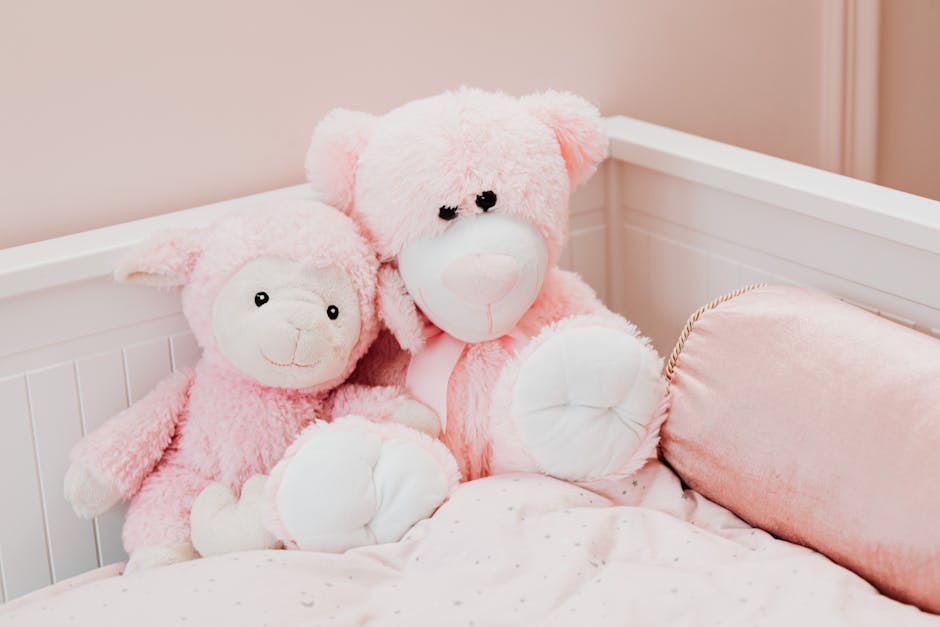Jellycat might be the only stuffed animal brand that causes a panic when it sells out. Try searching for a Bashful Bunny or an Odell Octopus online, and you’ll often see “out of stock” written in bold red letters. If you’ve wondered why that keeps happening, you’re definitely not alone. Parents, collectors, and even casual gift-shoppers have been asking the same thing: why is Jellycat always out of stock?
Some of this comes down to simple popularity—the brand has built up an almost cult-like following. But there are other details behind the scenes, from how Jellycat makes its plush toys to the business moves they’ve chosen. Let’s look at what keeps this plush brand in such high demand, and why it’s often so tough to score your favorite animal.
What’s Driving Demand Far Above Supply?
The main issue really is demand. Jellycat themselves have said that “exceptional demand” is the biggest reason you can’t find certain toys in stock. The numbers back it up. Online chatter only grows whenever a restock happens, and according to retailers—including independent toy shops—a new delivery can sell out in hours.
Many brands dream of this problem: more people want their products than they can actually make. But there’s a point where success bumps up against reality. When you visit forum threads or parenting groups, you’ll see frequent posts about delays, price markups, and the frustration of “notify me” emails that seem to never arrive.
This isn’t just an internet myth, either. Reports from late April and early May 2025 confirm that stock issues are ongoing, with social media full of people posting photos of empty shelves or sharing tips on where to hunt down rare Jellycats. Some retailers have been public with their complaints, mentioning that “ordering issues” on Jellycat’s end make it hard to keep inventory filled. It’s become a kind of plush toy economy, with certain characters treated almost like collectibles.
The Brand’s Approach: Quality First, Always
Part of what keeps Jellycat’s shelves empty is their own approach to making toys. Each plush animal isn’t just cute—it feels different, too. They use short pile plush fabric that’s extremely soft and has a slightly weighted, floppy feel. Anyone who’s held one compared to bargain plush toys will notice this right away.
But this focus on quality has tradeoffs. Jellycat positions itself as a premium brand, and their prices reflect that. Instead of $3 bears you might find at a discount store, Jellycat toys usually fall in the $15-$30 range for the basic ones. Special, oversized versions or highly sought-after characters can cost much more, even reaching $300 on the resale market for rare models.
Going for quality over quantity can limit how quickly Jellycat can make and ship new toys. The manufacturing process seems slower and more involved than it would be for mass-market stuffed animals. So when waves of new customers show up—maybe after a celebrity posts about their kid’s Jellycat, or a TikTok trend kicks off—the brand can’t just flip a switch for instant production.
This decision to keep things exclusive is a bit of a double-edged sword. You get a great product, but it also means there’s less to go around. When demand shoots up, supply just can’t keep up at that level.
The Product Line: Less Is Sometimes More
Look at what Jellycat actually offers, and there’s another clue to the shortages. While the brand is famous for animal designs—think bunnies, octopuses, sloths, and lions—they don’t try to be all things to all people.
Jellycat doesn’t branch out much into puzzles, games, or other kinds of toys. They mostly stick to soft, plush animals, with a few quirky food characters and books sprinkled in. That means almost all their attention is on these core lines. Instead of chasing trends or licensing the latest cartoon character, Jellycat invests in their own original creations.
This focus works in their favor by building up strong demand for certain characters. The Bashful Bunny, for example, has become an icon in nurseries and as a “comfort” plush for all ages. If you want a Jellycat, you usually have a pretty clear idea of which one, and substitutes just don’t cut it. But there’s a downside here, too. Because Jellycat doesn’t diversify as much as some larger brands, anytime demand jumps for a particular animal, there isn’t a lot of backup stock or alternative products to redirect buyers.
Restocks Are Sporadic—and Frenzied
One thing to know if you’re set on a particular Jellycat: items do get restocked, but it’s rarely predictable. Lately, some of the top sellers have come back online for short windows. Stuffed animals like the Bashful Unicorn (ranging from $20 to $300, depending on size or rarity), Selma Sloth, and Odell Octopus have all popped up on the Jellycat website in recent weeks, usually with an announcement urging customers to act quickly.
But these restocks rarely last long. Stories from shoppers suggest that once they get the “back in stock” notification, the window to actually buy the toy might only be a few hours, if that. The “notify when available” feature has become vital for fans trying to complete their collection or grab a gift in time for a birthday.
Retailers face this issue too. Many toy stores report getting only a small supply of each shipment, and they’re often gone by the end of the weekend. This leads some parents to buy multiples when they finally spot a character in stock—just to avoid disappointment later.
Pricing, Collector Culture, and Resale Chaos
With scarcity comes another phenomenon: the secondary market. When a Bashful Bunny or an especially popular character goes out of stock at retail, prices can balloon online. Sites like eBay and specialty collectors’ forums sometimes list these plush toys for several times the original price.
Jellycat’s premium pricing and limited production runs help create this collector’s buzz. There’s a sense of urgency not just among parents or gift-givers but among adults who collect for fun, run plush-focused Instagram accounts, or treat rare Jellycats like limited edition art. When you combine that behavior with genuine restocking challenges, it’s easy to see why the toys often feel impossible to find.
The company’s business decisions also play into this. They’re not trying to be the next big-box toy—at least, not right now. Jellycat seems happy with their position as a slightly hard-to-get, high-quality option. That means they aren’t likely to push production beyond what they believe maintains their product standards, even if it means missing out on some sales.
Do People Find Workarounds?
With so many people competing for a limited number of plush animals, fans have gotten creative. Some shoppers use browser extensions and alerts to instantly notify them when a restock happens. Others form small online groups to share restock information, building a sort of unofficial support network.
Sometimes, the easiest thing is to buy secondhand or “nearly new” Jellycat toys. This has its own risks—prices are higher, and occasionally, quality isn’t what you’d expect from the original. Still, for a kid who’s attached to a lost animal, or for the collector trying to fill a gap, it’s one more way around the shortage.
Parent forums and social media groups often have “ISO” (in search of) posts for rare or discontinued Jellycats. It’s reminiscent of how sneaker collectors or comic book fans track down specific editions. While it might sound excessive for a plush toy, anyone who’s watched a child cry over a missing bunny understands the stakes.
How Jellycat Responds
Jellycat seems aware of the frustration their popularity causes. If you visit their website, you’ll see clear messages explaining the high demand and providing tools (like the notify feature) to help shoppers get updates. They occasionally send out emails announcing major restocks, though these waves of new inventory never seem large enough to meet demand fully.
There’s a sense that Jellycat is working, in their own way, to balance growth and exclusivity. They don’t explicitly promise massive increases in production, and their official statements suggest a focus on keeping quality high “for all our fans” rather than rushing new stock out the door.
If you’re curious about the broader business implications of companies coping with surging demand and restricted supply, platforms like Start Business Story sometimes cover these trends and the trade-offs brands like Jellycat navigate.
The Takeaway: Quality and Caution Go Hand in Hand
At the end of the day, Jellycat’s supply shortages can be traced back to a few fundamentals. The brand creates a product people genuinely want, using materials and designs that stand out. They keep their focus narrow, sticking with plush animals—especially the classic few like bunnies and octopuses—and resist the urge to churn out endless varieties.
Paired with a steady stream of new fans, careful quality control, and a soft refusal to let production spiral, those choices mean Jellycat items will probably keep being tough to find—at least for now. People who care most about getting the real thing are willing to wait, or jump through a few hoops.
For everyone else, it’s a reminder that sometimes the plush toy game is as much about patience as it is about cuteness. For now, Jellycat seems content being the stuffed animal brand you have to work a little harder to catch. And honestly, judging by how quickly new inventory disappears, their formula probably isn’t changing soon.



